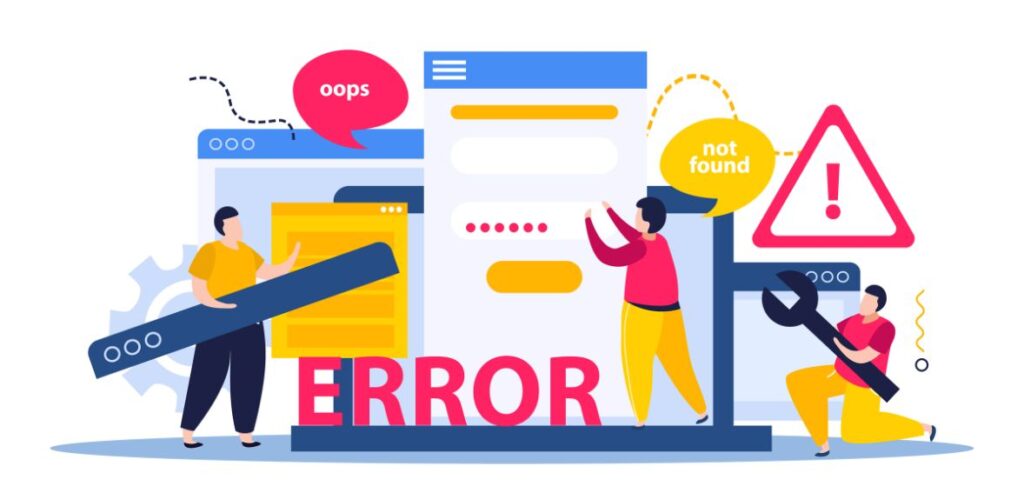
ServiceTitan vs Jobber: Which Field Service Software Delivers Better ROI for U.S. Contractors?
Selecting the appropriate software for a contracting business can occasionally be viewed as choosing a partner: while the wrong option may slow down your progress, the right one can help you advance. Whether they work in HVAC, plumbing, electrical, landscaping, or other home-service trades, U.S. contractors must invest heavily in field service software.
Onboarding, training, data migration, feature adoption, and continuous maintenance are additional costs beyond monthly fees or rates per technician. ROI isn’t just about how much you spend; it’s also about how much you get back, like fewer mistakes, more jobs, satisfied customers, and less material waste. Jobber and ServiceTitan are two popular choices.
Although they both seek to assist contractors in managing their operations, their priorities and scales differ. Knowing their advantages and disadvantages as well as how value builds up over time is essential for any contractor deciding which will deliver better return on every dollar spent.
Table of Contents
ToggleWho Are ServiceTitan and Jobber

Using advanced dispatch, thorough job costing, inventory tracking, marketing modules, and extensive reporting, ServiceTitan is designed for larger home-service companies with several technicians that frequently handle both residential and commercial work.
It is renowned for providing a wide range of advanced capabilities, robust integrations (such as inventory management, two-way QuickBooks sync, and complete pricebook control), and scalability.
In contrast, Jobber is more suited for small and medium-sized contractors. Its advantages include simplicity of use, quicker setup, more transparent pricing tiers, and coverage of essential functions like basic dispatch, scheduling, invoicing, quoting, and client communication.
Jobber frequently meets the needs of contractors with simpler operations or fewer technicians while requiring less overhead. Although both tools are well-known in the field service management (FSM) market in the United States, ROI results vary due to the differences in their target users.
Comparing Costs and Pricing Structures

What you pay and how that payment scales are two of the most important factors that determine ROI. Jobber provides clear pricing tiers; for instance, its Core, Connect, and Grow plans offer incremental feature access and are suitable for small to mid-sized crews. For independent contractors, basic usage could cost a few dozen dollars a month.
On the other hand, ServiceTitan rarely releases base prices. According to publicly accessible comparisons, once the more advanced modules are taken into account, per-technician/user/month rates typically range between about US$100 and $300/user/month. The costs of setup, onboarding, training, and implementation are typically higher.
The cost of becoming fully operational, including data migration, employee training, workflow customization, and integration configuration, must be taken into account by contractors in addition to the subscription fee. For smaller contractors, Jobber’s lower upfront and ongoing costs often mean faster breakeven. For larger ones, ServiceTitan’s investment may be justified by efficiencies gained at scale.
Feature Depth and Functionality Differences
ROI is heavily influenced by feature differences in addition to price. With the help of ServiceTitan’s advanced job costing and real-time metrics, contractors can understand technician performance, parts costs, travel times, and margin per job.
It has strong pricebook features, including bulk editing, managing items, labour, and materials, maintaining a flat-rate pricebook, connecting directly to supplier catalogs, and dynamically adjusting prices in response to cost fluctuations. Inventory control is integrated into the office, warehouse, and truck.
CRM modules and marketing automation tools are more complex. Quoting, scheduling, invoicing, client management, technician mobile apps, customer notifications, payments, and follow-ups are just a few of the many essentials that Jobber covers well.
But it may lack in granular job cost breakdowns, deep inventory workflows, large-scale marketing modules, or advanced dispatch optimizations. Contractors who need simpler processes may benefit more quickly through Jobber; those who want detailed insight and optimization at scale may find ServiceTitan more aligned with their goals.
Modern field service platforms are becoming more sophisticated, combining automation, analytics, and seamless communication tools to simplify complex workflows. This evolution can be clearly seen in how certain software platforms continue refining user experience and scalability, as highlighted in the ServiceTitan review, which reflects the growing emphasis on efficiency and adaptability in today’s service management ecosystem.
Implementation, Onboarding, and Learning Curve

If employees find it difficult to utilize the features of the software, even the best software will have a low return on investment. Jobber’s quicker onboarding has received a lot of praise; many users, particularly in smaller teams, report getting started in a matter of days or weeks. It usually has a simpler to use interface.
Training materials are adequate for typical small team setups, and support channels are available. ServiceTitan requires more of a ramp: to utilize its advanced features, teams frequently need weeks of configuration, structured training, and changes to business processes.
Aligning all workflows, reporting, integrations, and mobile apps takes more time up front. The higher initial overhead can pay off for contractors whose operations are complex and who are willing to put in the time. However, for others, that education curve can delay return or result in underutilization, reducing ROI.
Scalability and Growth Potential
Scalability is one of ServiceTitan’s greatest advantages. ServiceTitan provides tools to manage that jump for contractors who expect growth—to open more locations, move into commercial work, hire more technicians, or manage multiple business units.
It is appropriate for companies looking to grow because of its roll-up reporting, job costing across divisions, complex pricebook management, advanced dispatch for numerous technicians, inventory across locations, and deeper analytics. To a certain extent, Jobber can manage scaling, including larger teams, more users, and more jobs each month.
However, after a while, its shortcomings (in terms of some sophisticated features, integrations, and fine-grained control) may result in inefficiencies or necessitate the addition of additional systems. Therefore, ServiceTitan’s return on investment (ROI) is highest when expansion and complexity necessitate those extra capabilities—and when a contractor is dedicated to using them.
Efficiency Gains: Time Saved, Errors Reduced
Time savings, such as reduced travel waste, follow-ups, billing errors, job scheduling clarity, and back-and-forth between the office and field, account for a significant portion of return on investment. To varying degrees, both platforms offer these advantages. Jobber’s ease of use frequently makes it possible for automated reminders, simple payments, quicker customer approvals, and faster invoicing.
Efficiency can change a small business by reducing missed or duplicated tasks, increasing cash flow, and reducing administrative hours. However, ServiceTitan offers more thorough tracking of technician productivity, job costs, and parts usage, which can reveal inefficiencies concealed in job margins.
Time savings and a reduction in errors at scale can result in significant financial benefits for larger operations. However, these benefits require careful tool use, including accurate data entry, reporting, and analytics use.
By refining routing and reducing downtime, both platforms help eliminate wasted travel hours. For insights on optimizing field service schedules and accelerating payments for mobile teams, see how streamlined logistics drive revenue.
Customer Experience and Retention Impacts
In addition to price, contractors compete on trust, dependability, and speed. Customer satisfaction—repeat business, recommendations, and favourable reviews—is influenced by tools that facilitate online booking, accurate quoting, real-time updates, and customer communication.
Jobber offers robust, practical tools for review requests, payments, quote approvals, and client notifications. It facilitates the provision of professional experiences by small contractors.
More advanced features for the customer experience are frequently provided by ServiceTitan, such as integrated email or SMS marketing, follow-up campaigns, lead tracking, a more comprehensive CRM, and, if appropriate, loyalty or membership-style programs.
Retention is increased when one can react fast, provide precise estimates, control scheduling visibility, and reduce customer annoyance. Better retention eventually results in lower acquisition costs and a higher return on software investment.
Integration with Accounting, Payments, and Inventory Systems

Field service software returns are multiplied by effective financial workflows. More advanced integrations are provided by ServiceTitan, such as robust purchase order workflows, supplier catalog connectivity, inventory modules, and two-way synchronization with accounting systems (including desktop and online versions).
These increase job profitability, decrease manual reconciliations, and lower part-stocking errors. Jobber also offers invoicing and payment capture by integrating with well-known accounting software and payment gateways. These are adequate for simpler operations.
However, ServiceTitan’s more advanced integrations can increase ROI by cutting waste and overhead when parts costs, inventory mismatches, and accounting delays eat away at margin. Contractors should measure which features are essential given their current pain points.
Support, Community, and Vendor Stability
ROI is dependent on a continuous vendor relationship, which includes software bugs, responsive support, updates, and new features. Jobber is frequently commended for its stable and user-friendly mobile app, quick support, and ease of accessing assistance.
Quick support is crucial to day-to-day operations when your company has a technical problem or a procedure that needs to be adjusted. ServiceTitan is also well-known, particularly among larger contractors; they make significant investments in security, layers of support, new features, and ongoing development.
However, some users complain that the scale and configurability may make it take longer to resolve complex issues, and that the cost or resource requirements to use advanced features are sometimes underestimated. This element plays a significant role in determining ROI for companies that anticipate a high reliance on vendor support or that have limited internal technological capabilities.
Hidden Costs and Total Cost of Ownership (TCO)
The cost of a software subscription is sometimes just the beginning. Implementation, employee training, module customization, reporting setup, data migration from outdated systems, and perhaps hiring someone to oversee the tool or analytics are examples of hidden costs.
More of these unstated expenses are frequently associated with ServiceTitan’s larger feature set. Because Jobber is lighter, there are fewer modules to set up, less training time, and a lower chance of underutilization. Additionally, ServiceTitan customers may incur recurring expenses related to pricebook maintenance, inventory management, managing multiple locations, and using advanced analytics.
Contractors should think about how much it will cost to finish setup, support employees, use features effectively, and scale over the course of months and years, in addition to the subscription price. ROI is based on actual net benefit over time rather than sticker price.
When Jobber Likely Delivers Better ROI
For certain contractors, Jobber is likely to deliver higher ROI sooner. If your business is small, with few technicians, simple job flows, modest inventory, lower customer volume, or limited complexity, Jobber’s lower cost, faster onboarding, and sufficiently powerful everyday features make it a strong choice.
When you can achieve professionalism—fast quoting, online booking, simple invoicing, client communication—without paying for features you don’t use, Jobber’s return is fast. Also, when you want flexibility: monthly commitments, ability to test and adapt tools without heavy investment, Jobber allows that. Contractors with tighter budgets and less tolerance for long implementation ramp-ups often find Jobber’s ROI hits positive earlier.
When ServiceTitan Likely Delivers Better ROI
When the scale and complexity of a contractor’s operations grow, ServiceTitan begins to shine. If you have many technicians, multiple locations, commercial as well as residential work, a significant volume of inventory and parts to manage, you likely benefit from advanced dispatching, parts tracking, job costing, and pricebook control.
Also, when margins are tight and you need deeper analytics to identify inefficiencies—travel time, parts waste, technician idle time—ServiceTitan provides tools to surface those. For businesses where customer experience features—marketing, follow-ups, loyalty/tagging—matter, or where compliance/reporting must be precise, ServiceTitan tends to deliver better long-term ROI despite higher up-front cost.
Drawbacks and Risks for Jobber Users
Jobber’s simplicity is its strength, but also a limitation. As needs grow (more techs, more jobs, more parts, more customers), a lack of certain advanced features may become bottlenecks. For example, inventory tools are less sophisticated, custom pricebook control is more limited, analytics may not drill as deep, and integrations may require workarounds.
Additionally, contractors may find themselves outgrowing some functionalities, meaning they either have to accept inefficiencies or migrate later—both of which cost time and money. Also, some users report that pricing feels higher once you add more users or add-on features. Manufacturers or commercial jobs might require features beyond Jobber’s design, so choosing it may defer ROI gains.
Drawbacks and Risks for ServiceTitan Users
For ServiceTitan, the risks are largely about over-investing or under-utilizing. Paying for features and modules that are rarely used creates wasted expense. The learning curve and implementation overhead can delay benefits.
If your business is not structured to take advantage of advanced reporting, or if you have few technicians, many premium features may go unused. Additionally, there is risk of vendor lock-in or high switching costs. Some contractors mention that monthly fees, training time, and customization consume more resources than expected.
If a business fails to plan change management properly or lack internal discipline to maintain data accuracy or workflows, ServiceTitan’s robust potential may deliver less ROI than expected.
Return Timeframes: How Long Until You See ROI
How long before either tool pays off depends heavily on your business context. For most small businesses using Jobber, ROI can show up in months: improved cash flow through faster invoicing, fewer missed jobs, reduced admin time, and clearer scheduling.
For larger firms using ServiceTitan, return might take longer: 6-12 months or more to recoup onboarding and subscription costs, particularly if rollout is staged. That said, once the system is fully adopted—data is clean, staff trained, workflows standardized, features used—the benefits tend to multiply over time.
Measuring key indicators—gross margin per job, time per dispatch, travel costs, customer satisfaction—helps track whether the investment is working.
How to Choose: Key Questions for Contractors
Contractors considering which system will deliver better ROI should look inward and ask several questions. How many technicians will use the software? How complex are your jobs—do they include parts, inventory, margins, and overhead tracking? Do you need deep reporting, analytics, marketing automation, or is basic scheduling and invoice management enough?
What is your tolerance for upfront time and cost in training and implementation? Are you planning to grow locations or business units? Do you want flexibility, or are you okay with committing to a platform long-term? Answering these helps estimate ROI not just in dollars but in business health: time saved, customer satisfaction, and mistake reduction.
Measuring and Tracking ROI Post-Implementation

Once you choose a tool, it’s essential to measure whether it delivers what was promised. Track metrics both before and after implementation: time spent per job, number of jobs per technician per day, average margin per job, parts waste or inventory loss, customer payment cycle times, invoice error rates, customer satisfaction, retention, and referrals.
Also track costs: subscription, training, support, any add-ons or third-party integrations. Then calculate net benefit: increased revenue minus total cost of ownership. For many contractors, ROI is not a single metric but a composite of improved margin, lower overhead, higher utilization, and better customer retention.
Conclusion
Although both Jobber and ServiceTitan offer contractors genuine value, the optimal return on investment will vary depending on the size and objectives of your company. For smaller teams that require quick setup, reasonable pricing, and ease of use to maintain seamless operations, Jobber excels.
On the other hand, ServiceTitan works well for larger contractors who need to manage a large number of technicians, inventory, and comprehensive analytics; when its full potential is utilized, it yields higher returns. In the end, workflow alignment, data accuracy, and implementation are what generate return on investment—not the software itself.
The ideal platform should promote sustainable growth, improve customer relationships, and increase efficiency. Field service software becomes more than just an operational tool when carefully aligned with your business model; it becomes a foundation for sustained success.
